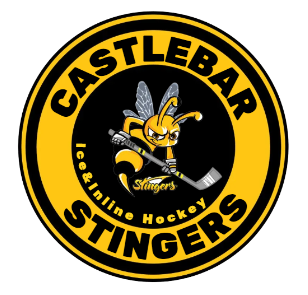Helmet - Most
hockey injuries occur to the head and face. The helmet should
fit snugly. Helmets should be certified by the Hockey Equipment
Certification Council (HECC) or Canadian Amateur Hockey
Association (CAHA). For junior players up to 18 years of age full facial
protection is mandatory. Players must have either a full-face cage or
a full visor attached to their helmet. Also should include a
protective chin cup and a chin strap.
Gloves -
should allow for movement while protecting well past the wrist.
Gloves not only provide protection from sticks, or pucks but they are
helpful in absorbing the shock of your stick when you shoot a slap
shot. One of the safety features of hockey gloves is thumb protection
which is an area that is armored and fixed in a position that helps
protect it from sprains and breakage.
The glove should
offer freedom of movement in all positions without chafing or
restricting movement.
Shoulder/chest
pads - protect shoulders, collarbone, chest, upper arms, belly, upper back, and spine during collisions with other players or
a flying puck. Should not be too tight or too loose.
Elbow pads -
protect the elbows, forearm, and a portion of the upper arm. When
properly fitted the top of the elbow pad should meet the bottom of
the arm of the shoulder pad and extend down the forearm to the top of
the glove. The elbow pad should not restrict the movement of the
elbow.
Shin pads -
are designed to protect the shin and knees, lower leg (knee and shin)
pads should have a hard plastic exterior and reach the top of your
skates.
Ice hockey pants
- a good quality pair of hockey pants with adequate padding in all of
these areas is critical. These should reach to the knee and offer
padding in the front, rear, and sides of the upper legs and
midsection.
Socks and a
jersey - Ice hockey socks go over the shin pads and help hold
them in place. The jersey is worn as a top over the shoulder pads,
and helps keep straps secure and everything in place.
Shorts with jock
- groin protection, is essential for male players.
Neck protectors
- These are mandatory for those under 18 years of age. Although some
leagues don't require them, these protect the neck from injury.
Mouthguard -
these protect the teeth, lips, cheeks, and tongue, and can help
prevent jaw injuries.
Ice Skates -
they have a plastic armor that is resistant to damage and scratches,
which perfectly protects against external damage. Should fit your
size and foot shape, offer plenty of ankle support, and have a steel
or hard plastic toe cup. Keep skates sharp so they perform better and
are less likely to get caught in ruts in the ice.
Hockey stick
- should be long enough to reach your nose when not on skates, or lips where you are on skates. The stick should have a curve that suits the
player. Ice hockey sticks are either composite or wooden.



